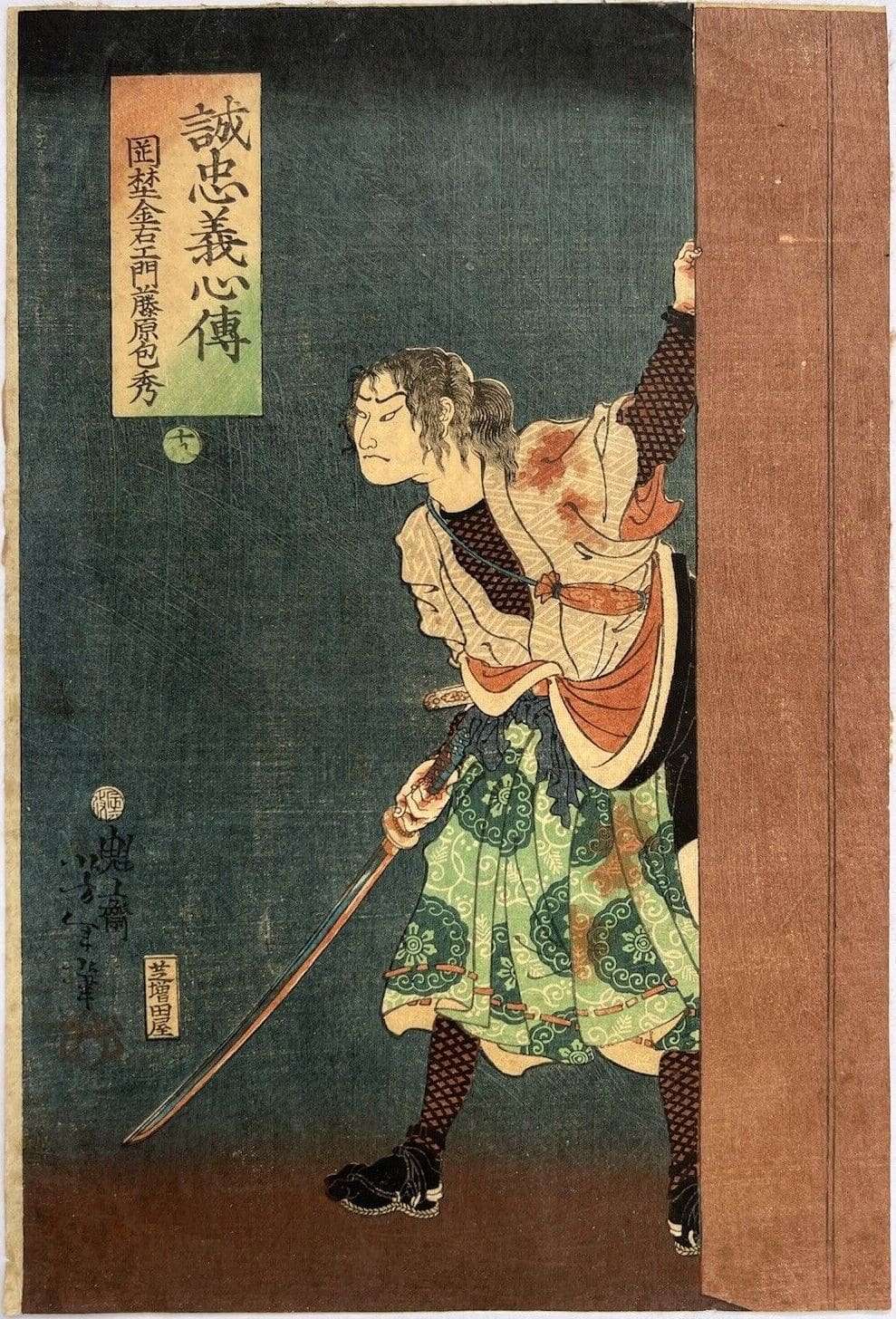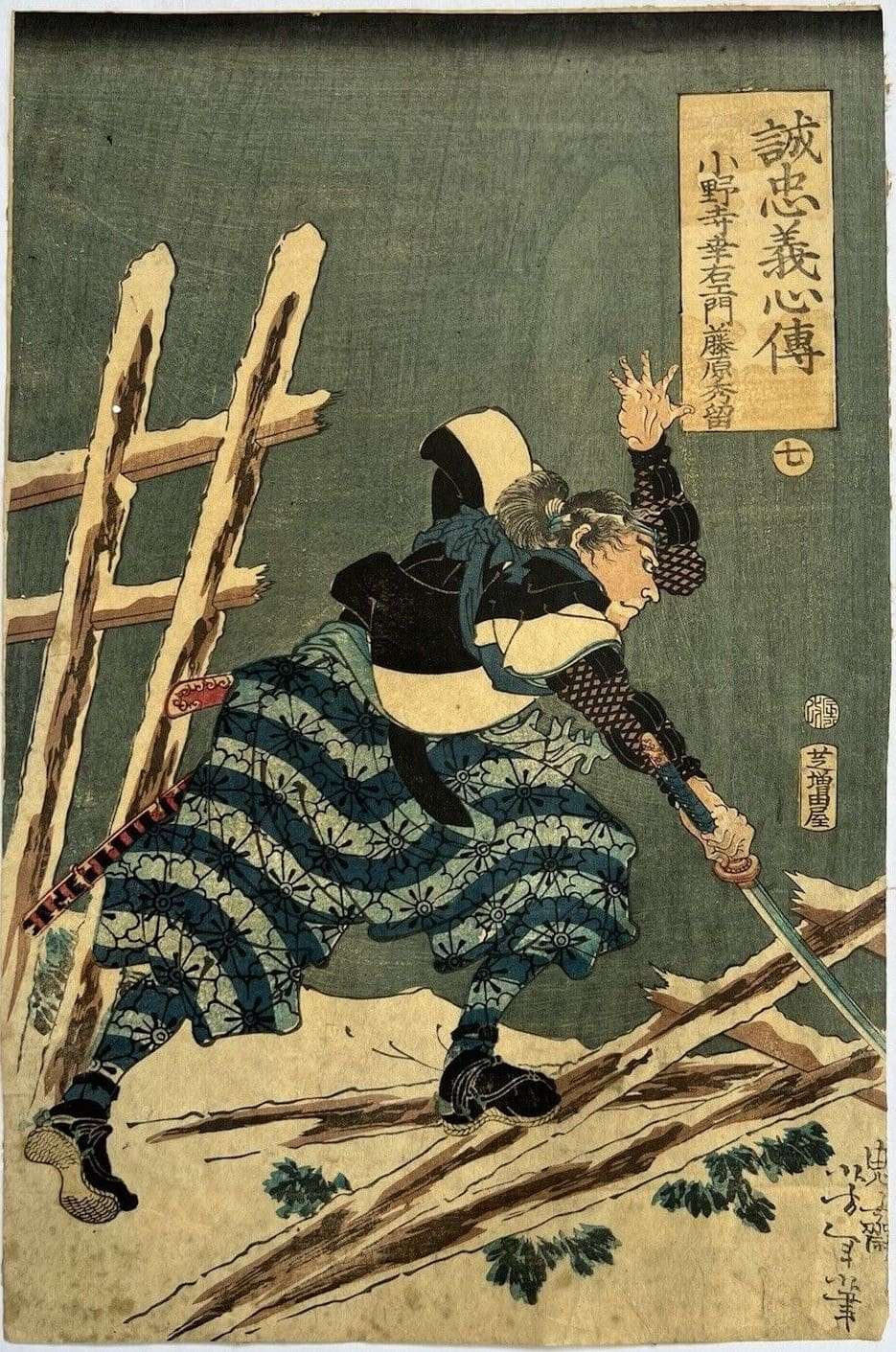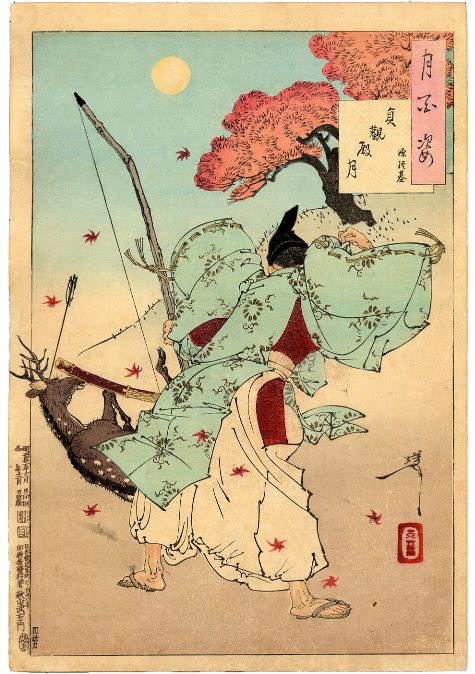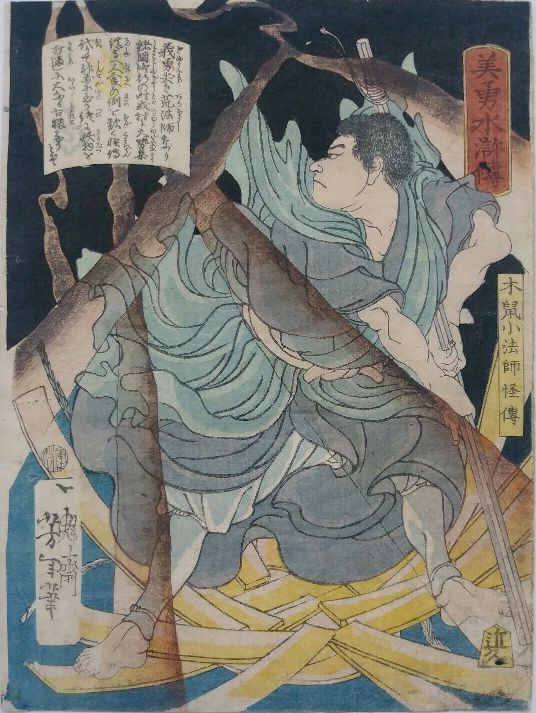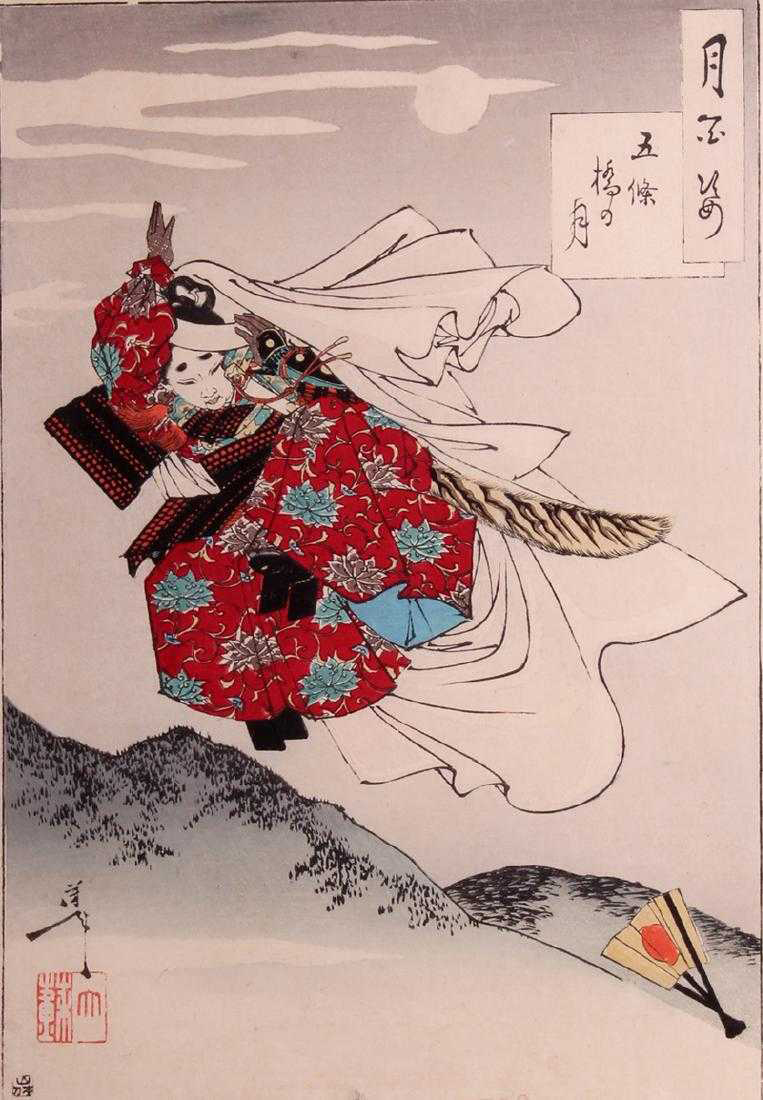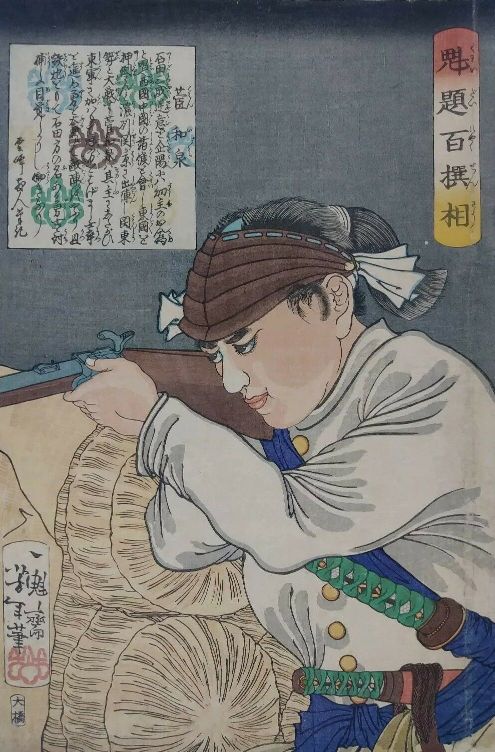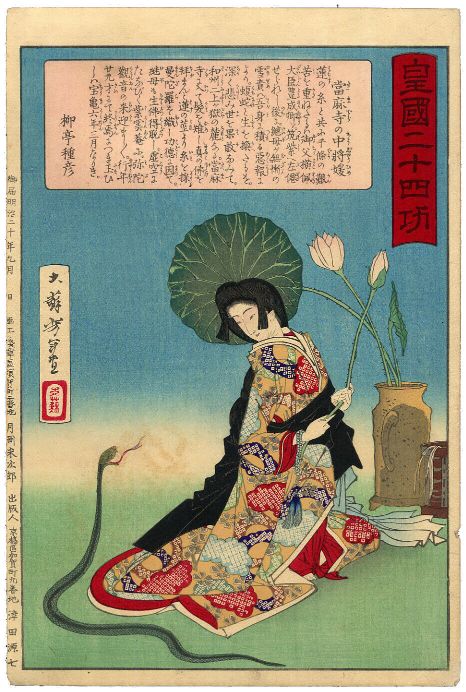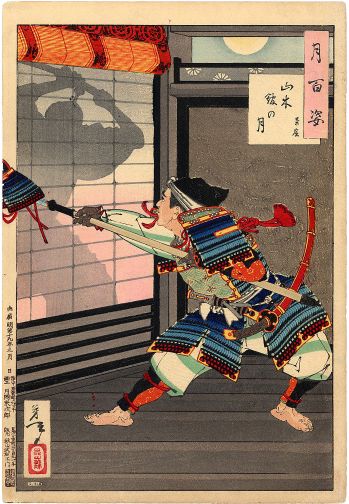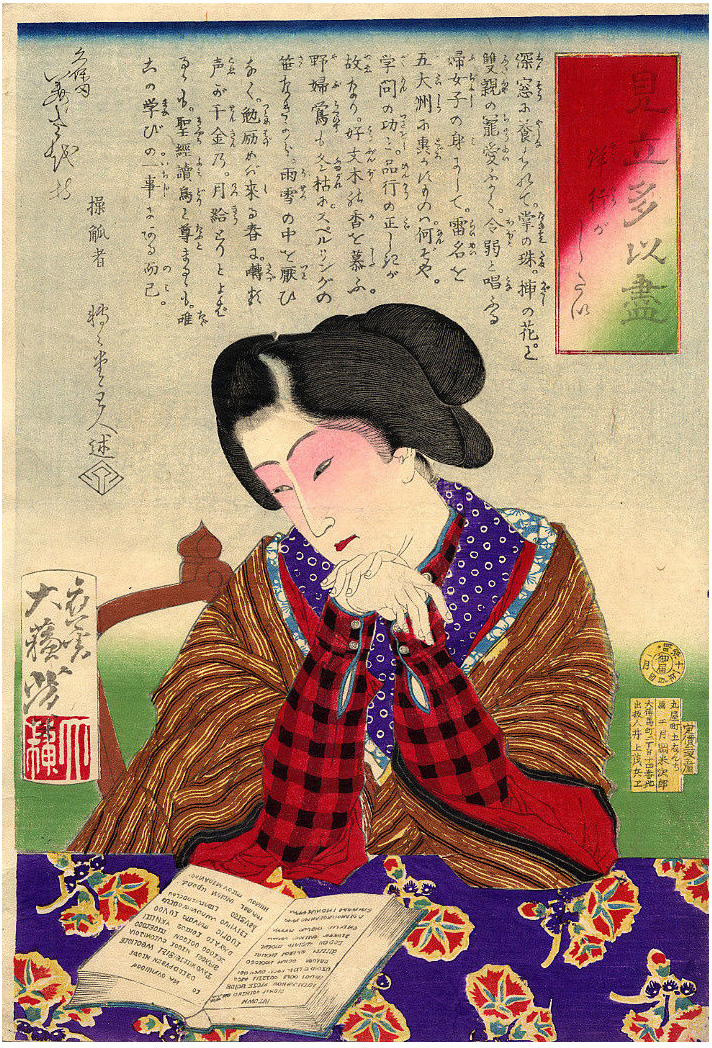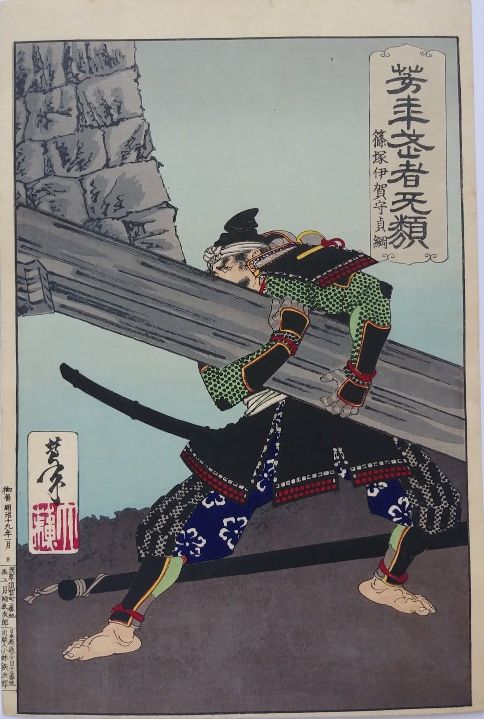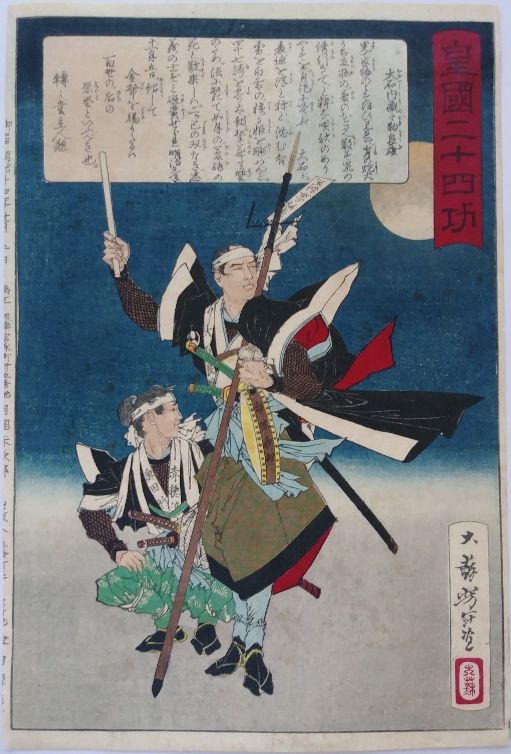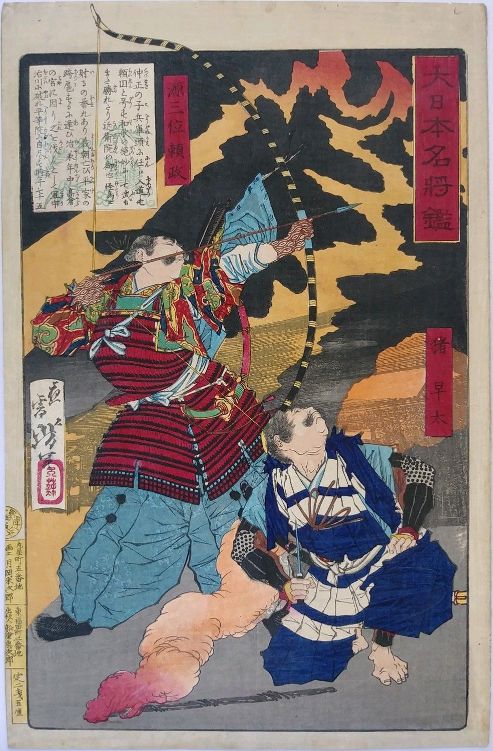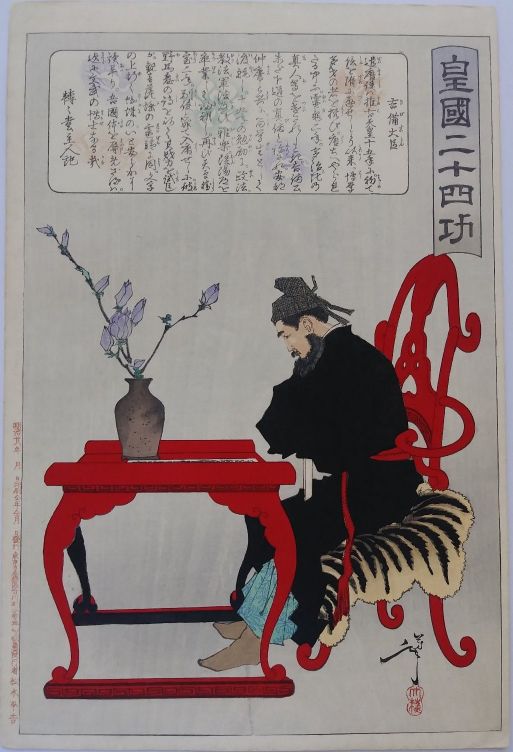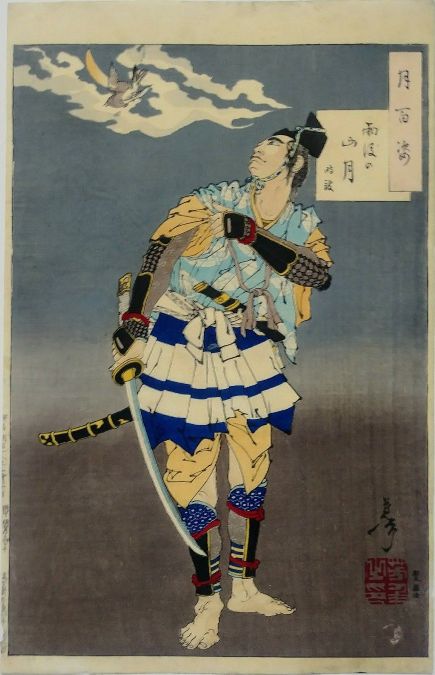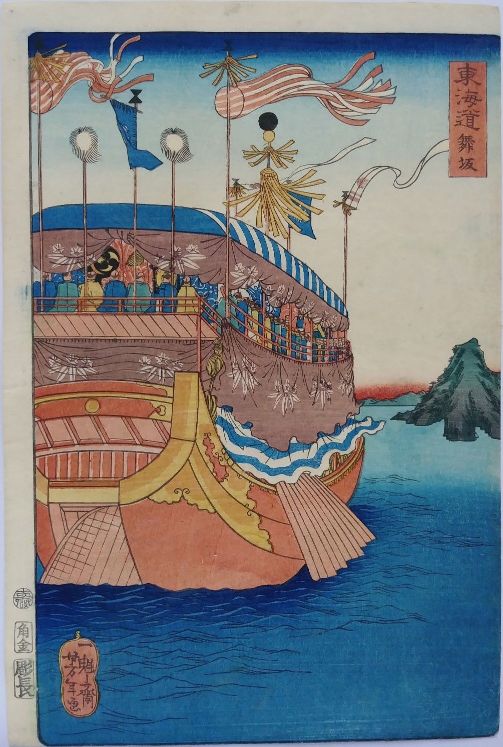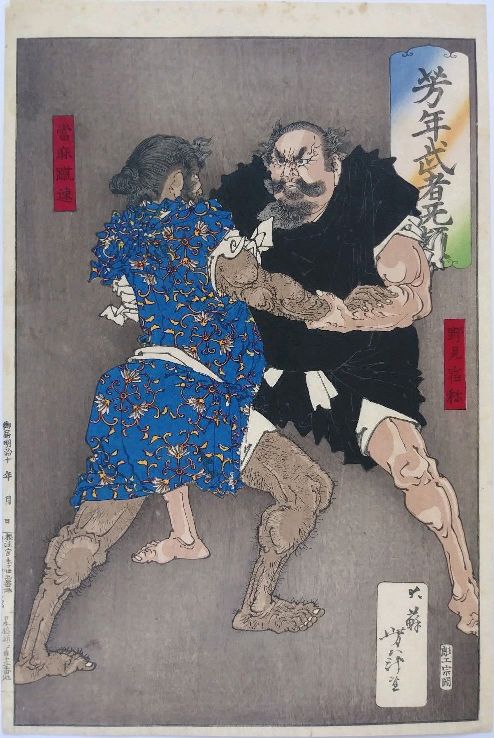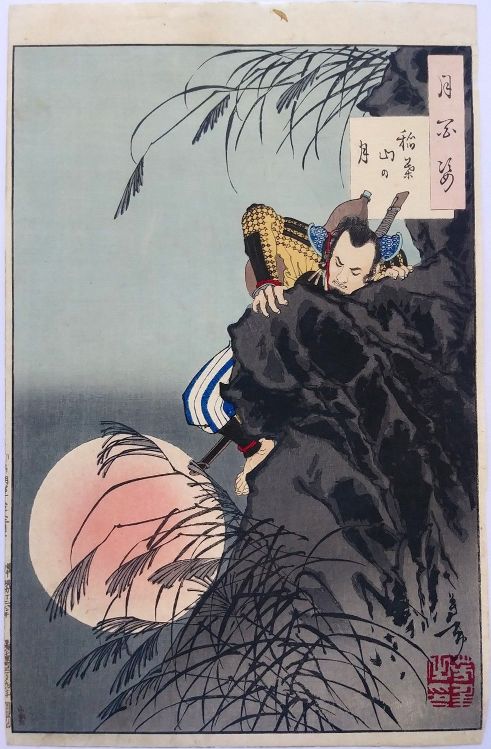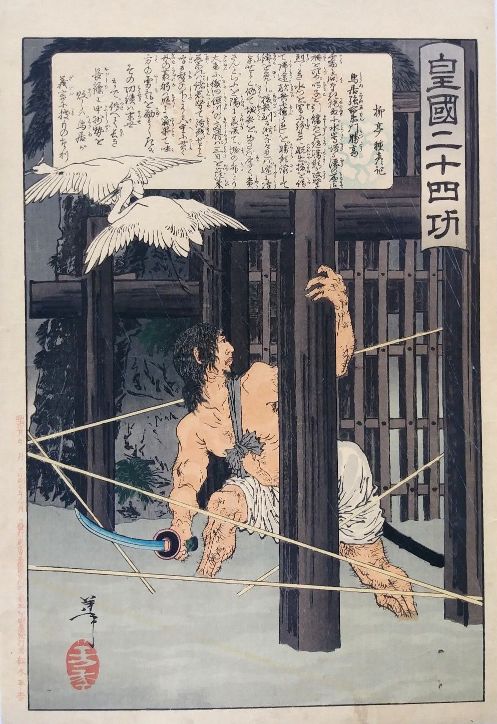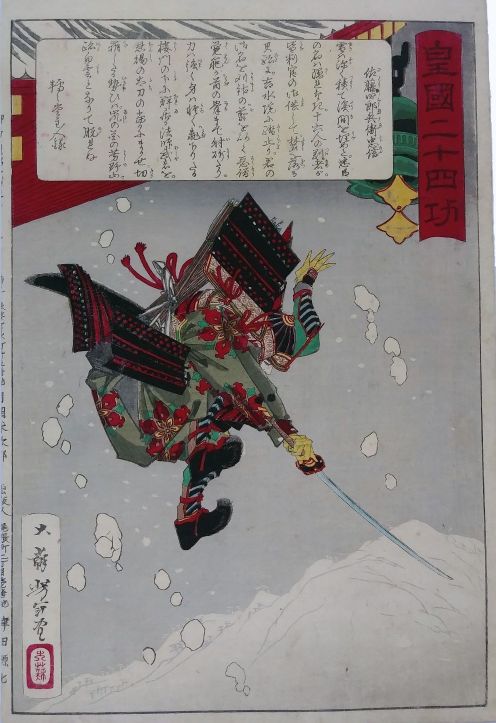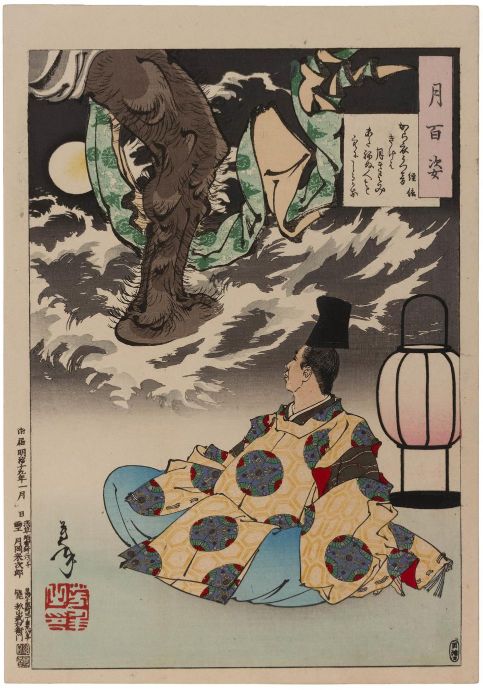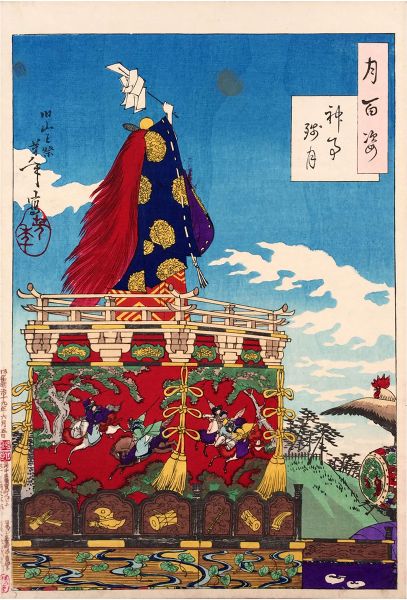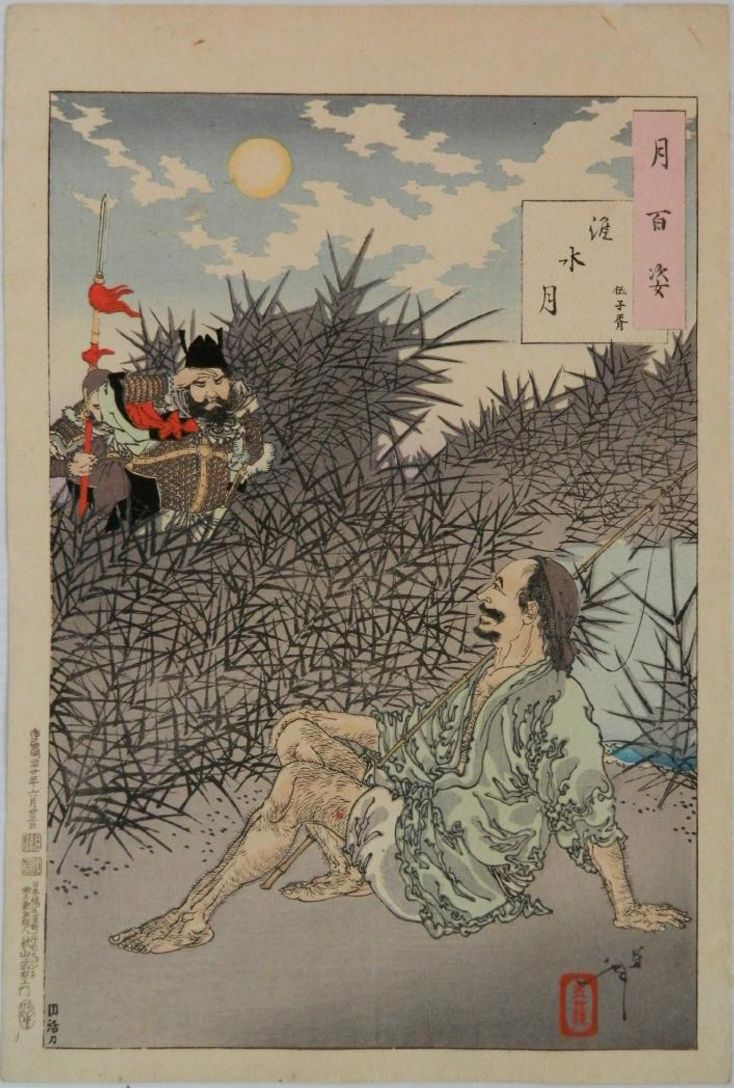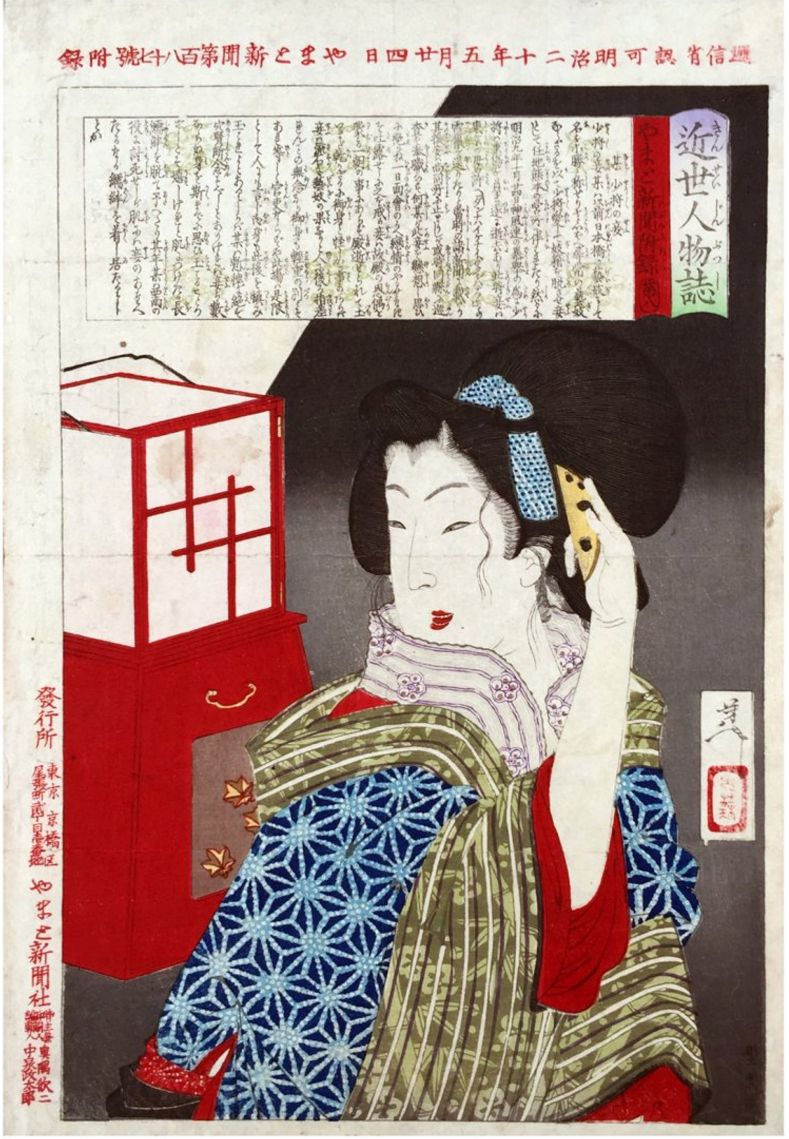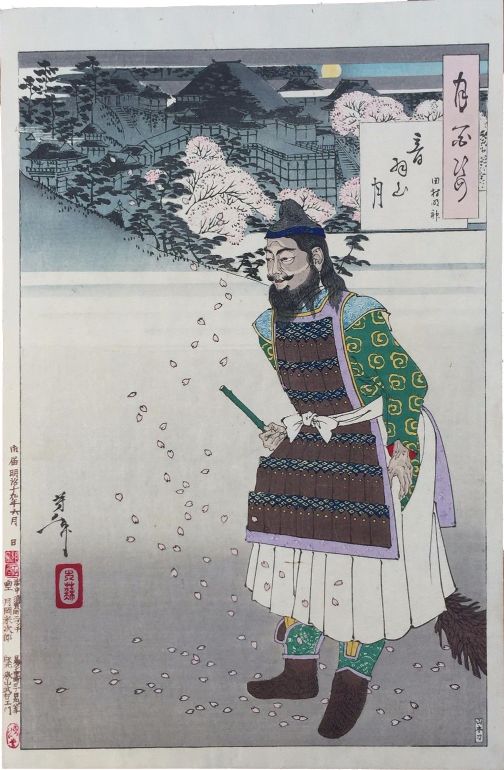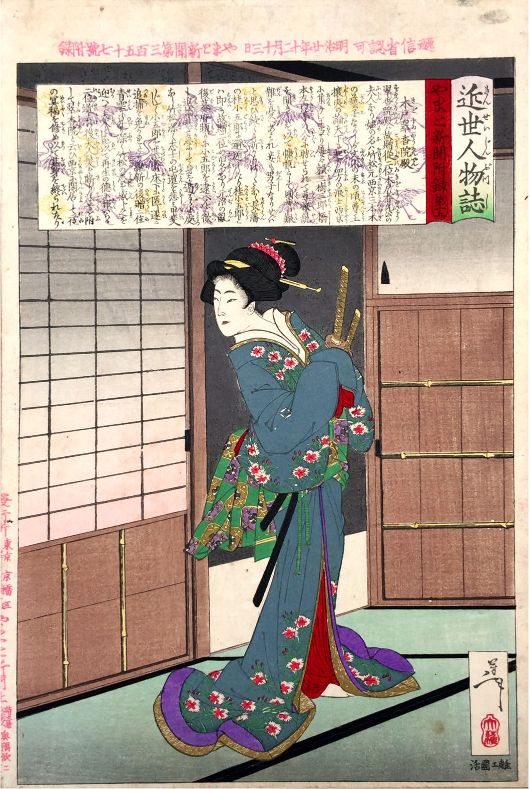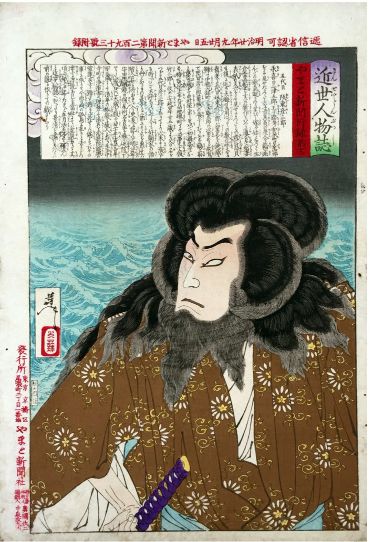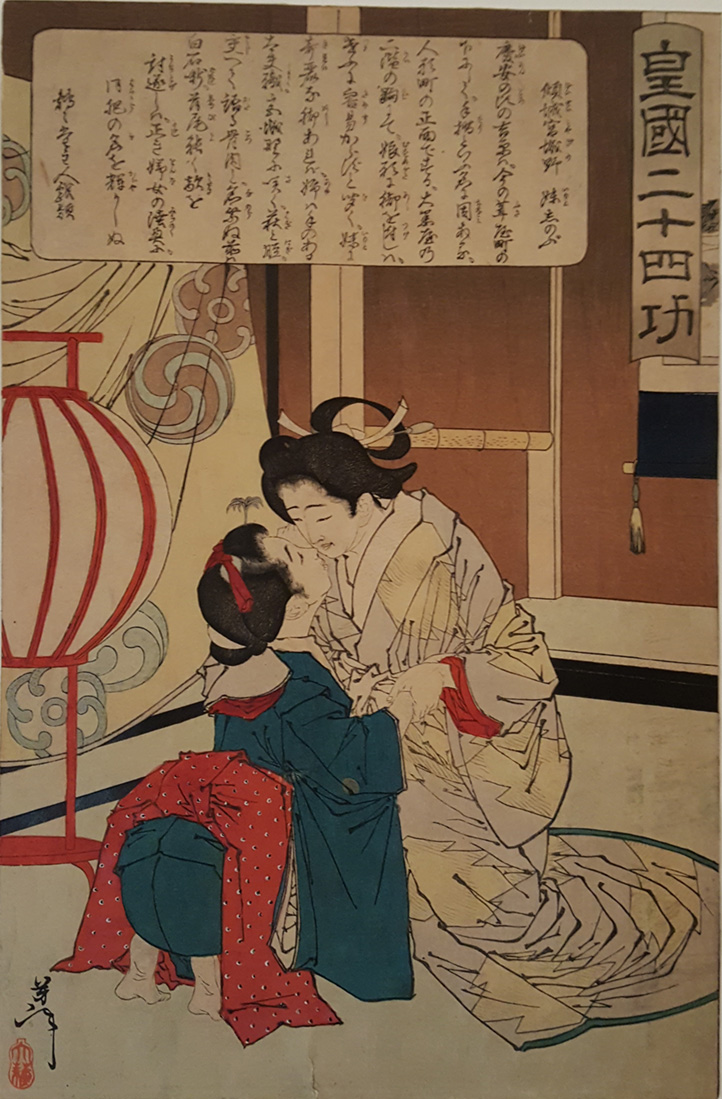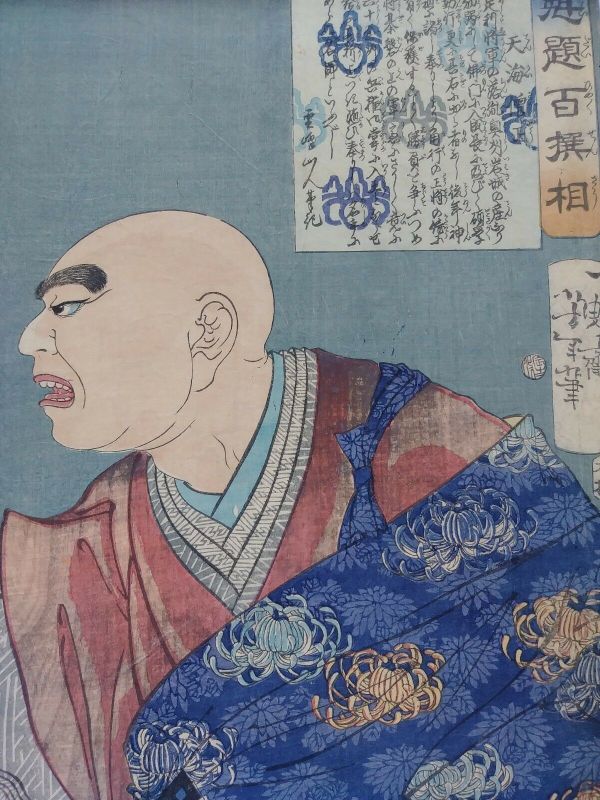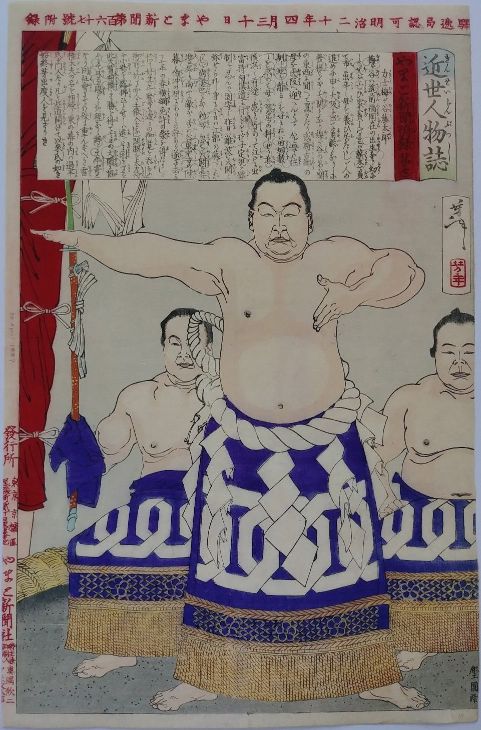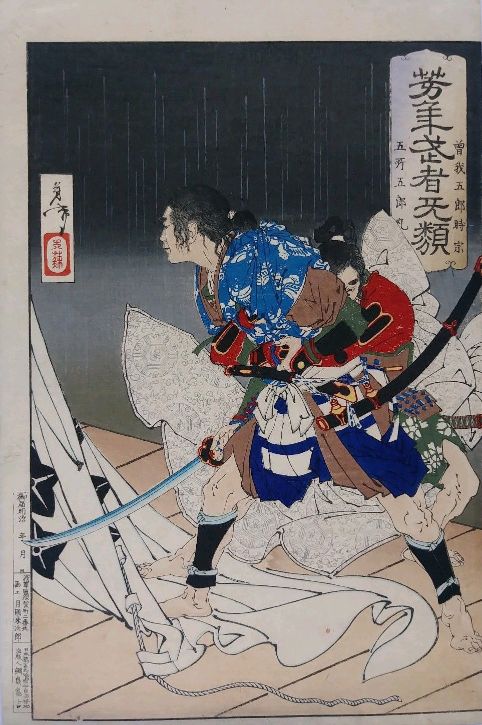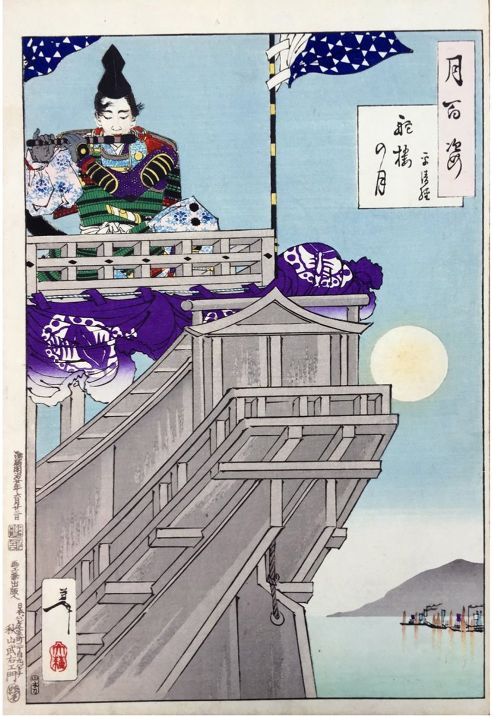Tsukioka Yoshitoshi (月岡 芳年, Japan, 1839-1892), also known as “Taisō” (大蘇) meaning “great resurrection,” is known as the last great master of ukiyo-e, a type of Japanese woodblock printing. The artist is also known for his turbulent life, which is evident in his energetic, complex, and beautifully violent prints.
Yoshitoshi was born in old Edo, Japan in 1839 during the Meiji period. His father was a wealthy merchant who bought his way to samurai status, a decorated hierarchical position in nineteenth-century Japanese society, but was violently murdered while Yoshitoshi was a young man. In 1850, when Yoshitoshi was just 11 years old, he apprenticed with Utagawa Kuniyoshi (1798-1861), one of the great masters of woodblock printing. Yoshitoshi spent years copying Kuniyoshi’s sketches and perfecting his draftsmanship before beginning his own concentration of work. He also studied western sketches and prints that Kuniyoshi collected. Yoshitoshi took on Kuniyoshi’s practice of drawing out the images with red ink first and then outlining with black ink. On his prints, Yoshitoshi also used the signature "Ikkaisai" or "Ikkaisai Yoshitoshi" prior to 1873. It is said that Yoshitoshi used this notation to emulate his teacher Kuniyoshi's use of the studio name "Ichiyûsai.” After 1873, Yoshitoshi dropped the "Ikkaisai" signature in favor of his nickname and artist signature, “Taisō.”
Yoshitoshi’s made his first recognized print in 1853. After Kuniyoshi’s death in 1961, Yoshitoshi produced 44 prints, despite the hardship and grief he was facing after Kuniyoshi’s death. From 1862-63, Yoshitoshi produced 63 prints that depicted kabuki -theatrical, overly dramatized, and exaggerated figures. Yoshitoshi’s career spanned two eras - the last years of feudal Japan, and the first years of modern Japan following the Meiji Restoration. He was 28 when the Meiji restoration took place, and in 1877, was a witness to the Satsuma Rebellion. Yoshitoshi’s prints contained graphic violence and death scenes, parallel to the lawlessness of Japanese feudal society imposed by the Tokugawa shogunate and emergence of Westerners. What makes Yoshitoshi’s violent prints unnerving yet intriguing to viewers, is that the artist sketched real life severed heads and limbs from corpses of killed soldiers from battle he witnessed around him, including the Battle of Uneo. Yoshitoshi incorporated these witnessed accounts in his prints.
The public and foreigners were drawn instantly to his beautifully violent and colorful work. With popularity came the need to produce more work. In 1865, Yoshitoshi made over 95 published designs- mostly historical or based on military subjects. Included in the 95 prints were two series-Tsûzoku Saiyûki (A Modern Journey to the West), about a Chinese folk-hero who is shown as a monkey, and Wakan Hyaku Monogatari (One Hundred Stories of China and Japan), which depict traditional Japanese ghost stories. Yoshitoshi also designed the series, Kinsei Kyôgiden (Biographies of Modern Men), which displays fighting scenes between two gambling troupes. However, some of Yoshitoshi’s most graphically violent prints were created from 1866-68. The series Eimei Nijûhasshûku (Twenty-eight famous murders with verse) show stabbings and decapitations of men and women that are intensely bloody and gruesome. Yoshitoshi also created the series Azuma No Nishiki Ukiyo Kôdan (Tales of the Floating World on the Eastern Brocade) in 1867. Then in 1868, following the Battle of Ueno, Yoshitoshi created a series of prints called Kaidai Hyaku Sensô (Selection of a 100 Warriors), which portrays close-up, foreshortened, and unusual angles of fighting military soldiers. He also produced his great series Tsuki Hyakushi (One Hundred Aspects of the Moon) (1885 - 1892), and Shingata Sanju-roku Kai Sen (New Forms of Thirty-Six Ghosts) (1889 - 1892).
By 1869, Yoshitoshi was considered Japan’s best artist and printmaker. He also worked with his friend and actor, Danjuro, and the group, Kyûkokai (Committee for Research into the Past), comprised of scholars and historians, to preserve some of the traditional Japanese arts. The woodblock-print art form was dying in the transition to Japan’s modernization and artists began turning to mass production techniques like lithography and photography. Yoshitoshi was one of the last sole woodblock printmakers after his mentor Kuniyoshi and the notable artists Hiroshige and Kunisada passed on. Yoshitoshi insisted on high standards of woodblock and print production and helped save it temporarily from degeneracy. Despite Yoshitoshi’s popularity from his violent prints, the artist lived in poverty for most of his life. With the Satsuma Rebellion of 1877, Yoshitoshi was able to fully support himself with the demand for prints and illustrations for circulating newspapers. The artist was not financially secure until 1882. However, the artist struggled with lifelong mental illness and depression and was submitted to a mental facility in his late 40s.
Tsukioka Yoshitoshi died June 9, 1892 at age 53 from a cerebral hemorrhage. Yoshitoshi’s complex and energetic work is highly regarded and can be found in numerous collections and major museums like the Museum of Fine Arts in Boston, Los Angeles County Museum of Art, Metropolitan Museum of Art in New York, British Museum, Hagi Uragumi Museum in Yamaguchi, and the Edo-Tokyo Museum, among others.







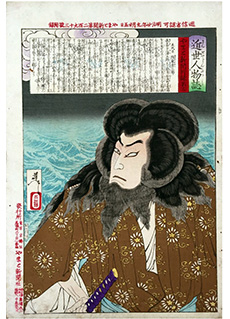
 Japan
Japan

